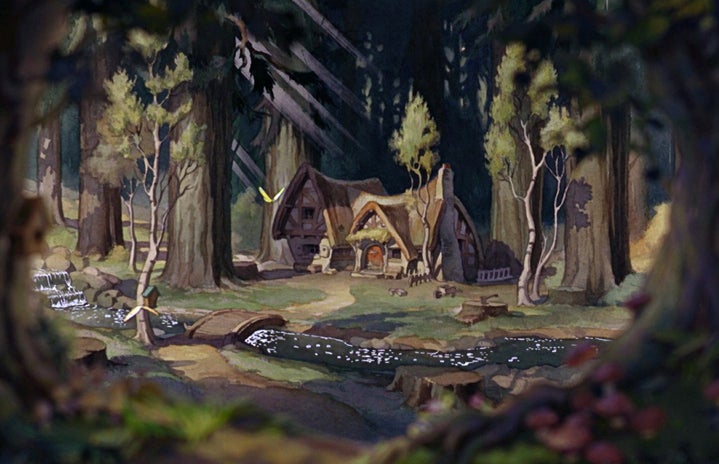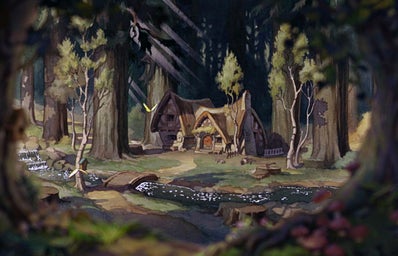“Once upon a time in a faraway land, there lived a…” how many of us have gotten fired up after reading these words? To most children out there, these have been the first words to the beginning of a new story filled with hope, magic, fantasy, and joy. The words “…and they lived happily ever after,” have given so many young children the joy of reaching closure and a profound sense of satisfaction. These stories have been told and retold throughout generations, with most of us longing for something like this to happen to us. What if Snow White had never taken a bite of the poisoned apple and little Ariel had never wished for legs? We would have had no story to read out to our kids. However, we have these enchanting tales that help young ones reach beyond their boundaries of imagination to enter a world filled with joy, magic, and hope.
Would you believe me if I told you that this wasn’t always the case with these magical fairy tales that we read now?
When you think of such an account, you often imagine handsome, young princes and beautiful princesses who embark on the journey of a happy life. Cinderella goes on to live her dream life with her prince after finding the glass slipper; Sleeping Beauty is saved from the poisoned prick by her prince with a magical kiss and so on.
But these tales are very far from the innocent stories told to us as children; most of them weren’t written for young children at all. History gives us a different point of view, a glimpse into the gruesome and uncomfortable events that have been projected as modern-day fairy tales. These often cater to a range of issues in social and historical contexts.
Little Red Riding Hood
We know the modern version of the story where a little girl is on her way to visit her grandmother who resides in the woods, while the wolf rushes to her grandmother’s place, gobbles up the old woman, and pretends to be her. Later when Red Riding Hood reaches her grandmother’s home, on having questioned the grandmother, the wolf reveals its true self. The wolf gobbles Red Riding Hood, who is later saved by the woodsman. But this is not what happened in the original version of the story. Originally, no woodsman saves Little Red Riding Hood.
This is a story written in 17th century France by Charles Perrault, for the adults amongst the aristocrats. Perrault was a man of great importance during the reign of Louis XIV and was often a part of get-togethers and meetings with the elite in salons. Perrault presents his listeners with a certain moral: that some wolves of a dangerous kind are like smooth-talking aristocrats that follow young women into salons to devour them, which may be interpreted as seduction. Some scholars believe that this is a story of rape where the wolf, who is a male seducer, lurks around salons waiting for a chance to pounce on young women. Through the years, there have been several other versions, but they are all connected by the same string of sexual assault.
Sleeping Beauty
Sleeping Beauty is cursed by a witch to go into a deep slumber with the prick of a spindle on her 18th birthday. She can be saved only by a true love’s kiss. But in one of the prior versions of the same story, Sleeping Beauty is not kissed by the prince; she is raped by him. This morbid act leaves her pregnant, and she delivers twins in the dormant state. She is awakened by her little son who sucked the spindle’s poison out. Meanwhile, the prince is married to another woman who doubts something when he comes to spend a few days with Sleeping Beauty. She orders Sleeping Beauty’s children to be brought to the castle and be cooked alive. The cook hides the twins and saves them. She later orders Sleeping Beauty to be brought to the castle and burnt alive. The King saves Sleeping Beauty and burns his queen. After which they go on to live their happily ever after. So much for a happy ending!
Hansel and Gretel
All of us have read the story of the brother-sister duo, whose stepmother ended up leaving them in the jungle because she wanted more food for herself during the famine. These children on their second abandonment stumble upon a witch’s house who eats children that come across her. However, these kids end up outsmarting her and burn her alive in her own oven. The tale of Hansel and Gretel has been told to keep children from wandering off into forsaken locations. This story has an established link with the great famine of Europe and England. During the hunger, the number of cases related to mass death, infanticide, and cannibalism exponentially grew. Seeking relief from this misery, several parents deserted their children and slaughtered their animals.
Every single famous princess; Ariel, Jasmine, Rapunzel, Snow White have a past to them that dates back to appalling historical events. If it weren’t for the famous Grimm Brothers, the stories that we read out to children today in classrooms or before going to bed would have been different from what they are now.
These are just a few of the stories that have terrifying, horrific origins that involve torture, cannibalism, rape, and other grotesque occurrences. The morals that these carry with them are more potent than the modern-day fables that are coated with layers of innocence and happiness. In contrast to the modern fairy tales where good defeats the evil and the righteous takes over the wicked, the old folktales were a caution. They offer kids hope and make them believe that changing oneself for good can bring about a positive change in the world.
The fantasy-filled elements of these fairy tales when pieced together spawn the gateway to our lost youth. Yet, we must not forget the origin of these tales that carry with themselves powerful and persuasive messages.


